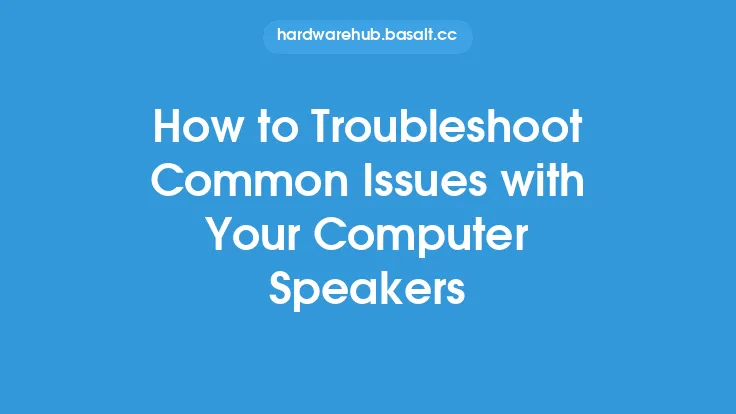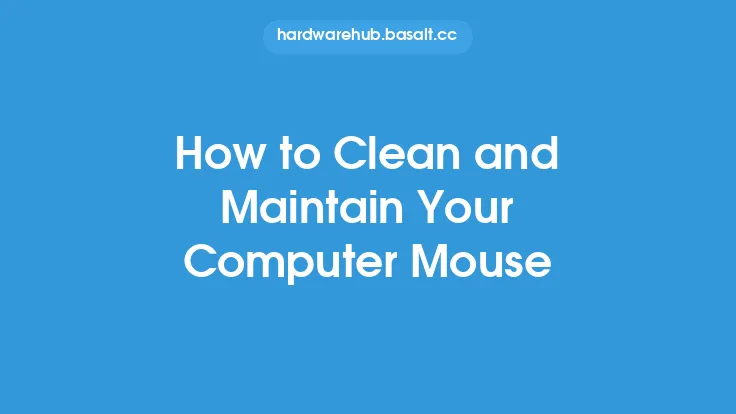Maintaining a printer can be a daunting task, especially for those who are not familiar with the technical aspects of these devices. However, with the right knowledge and techniques, you can keep your printer in good working condition and troubleshoot common issues that may arise. In this article, we will delve into the world of printer maintenance and troubleshooting, providing you with the information you need to keep your device running smoothly.
Introduction to Printer Maintenance
Regular maintenance is essential to extend the lifespan of your printer and prevent common issues from occurring. This includes cleaning the printer regularly, checking for firmware updates, and performing routine tests to ensure that the device is functioning properly. Cleaning the printer involves removing dust and debris from the print head, rollers, and other internal components. This can be done using a soft brush or a specialized cleaning solution. It is also important to check for firmware updates, as these can often resolve issues and improve the overall performance of the device.
Common Printer Issues and Troubleshooting
Despite regular maintenance, issues can still arise with your printer. Some common problems include paper jams, ink or toner cartridge issues, and connectivity problems. Paper jams can be caused by a variety of factors, including misaligned paper trays, worn-out rollers, or debris in the paper path. To resolve this issue, you can try removing the jammed paper, cleaning the rollers, and realigning the paper trays. Ink or toner cartridge issues can be caused by low ink levels, clogged print heads, or faulty cartridges. To resolve this issue, you can try replacing the cartridge, cleaning the print head, or resetting the ink level monitor.
Printer Calibration and Alignment
Printer calibration and alignment are crucial to ensure that your prints are of high quality and accuracy. Calibration involves adjusting the print head to ensure that it is properly aligned with the paper. This can be done using the printer's built-in calibration tool or by printing a calibration page. Alignment involves adjusting the print head to ensure that it is properly positioned on the page. This can be done by printing an alignment page and adjusting the print head accordingly.
Deep Cleaning and Maintenance
Deep cleaning and maintenance involve performing more thorough cleaning and maintenance tasks to keep your printer in good working condition. This includes cleaning the print head, rollers, and other internal components using specialized cleaning solutions. It also involves lubricating the rollers and other moving parts to prevent wear and tear. Deep cleaning and maintenance should be performed regularly, ideally every 6-12 months, depending on the usage of the printer.
Advanced Troubleshooting Techniques
Advanced troubleshooting techniques involve using specialized tools and software to diagnose and resolve complex issues with your printer. This includes using printer diagnostic software to identify issues with the print head, rollers, and other internal components. It also involves using specialized cleaning solutions and tools to clean and maintain the printer. Advanced troubleshooting techniques should only be performed by experienced users or professional technicians, as they can potentially damage the printer if not done correctly.
Preventative Maintenance
Preventative maintenance involves taking steps to prevent issues from occurring in the first place. This includes using high-quality paper and ink or toner cartridges, avoiding overuse of the printer, and keeping the printer in a clean and dry environment. It also involves regularly updating the printer's firmware and drivers to ensure that the device is running with the latest software. By following these preventative maintenance tips, you can help extend the lifespan of your printer and prevent common issues from occurring.
Conclusion
Maintaining and troubleshooting a printer can be a complex task, but with the right knowledge and techniques, you can keep your device running smoothly. By following the tips and techniques outlined in this article, you can perform regular maintenance, troubleshoot common issues, and prevent problems from occurring in the first place. Remember to always refer to your printer's user manual for specific instructions on maintenance and troubleshooting, and don't hesitate to seek professional help if you are unsure about any aspect of the process. With proper maintenance and care, your printer can provide you with years of reliable service and high-quality prints.





